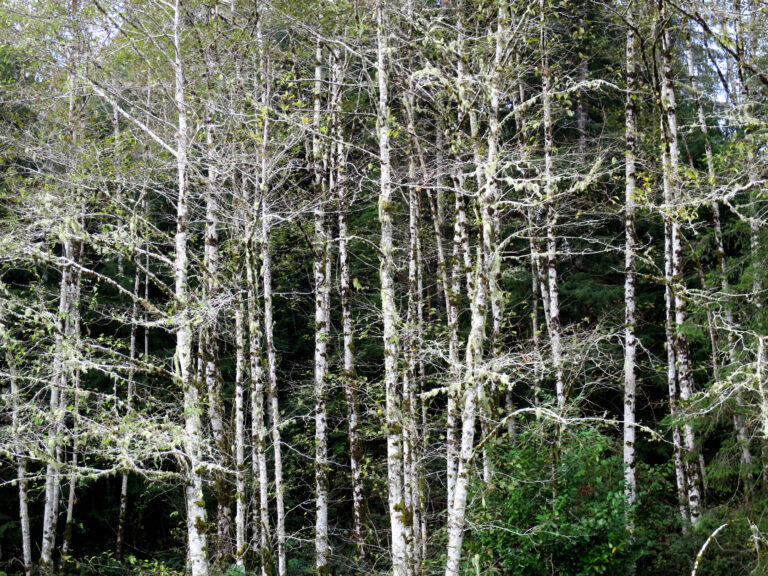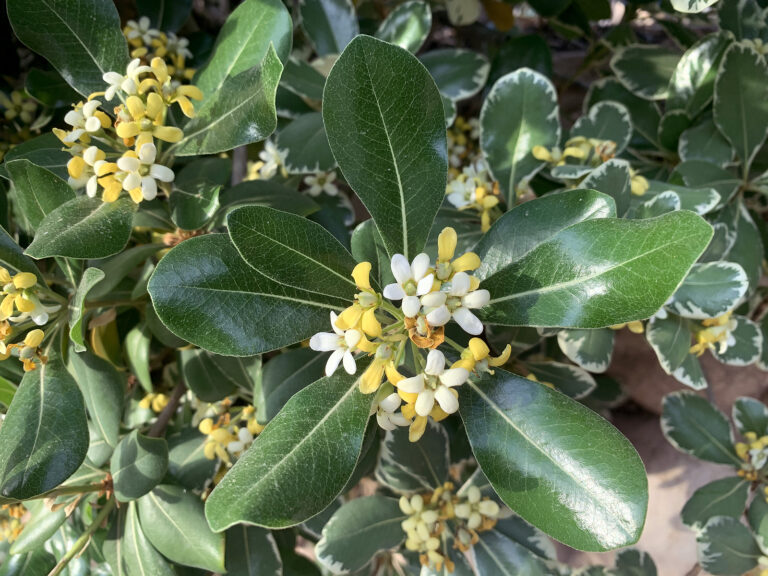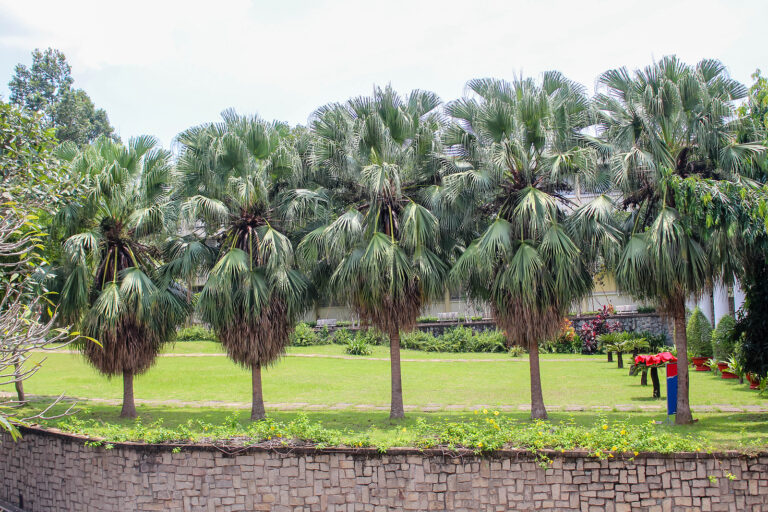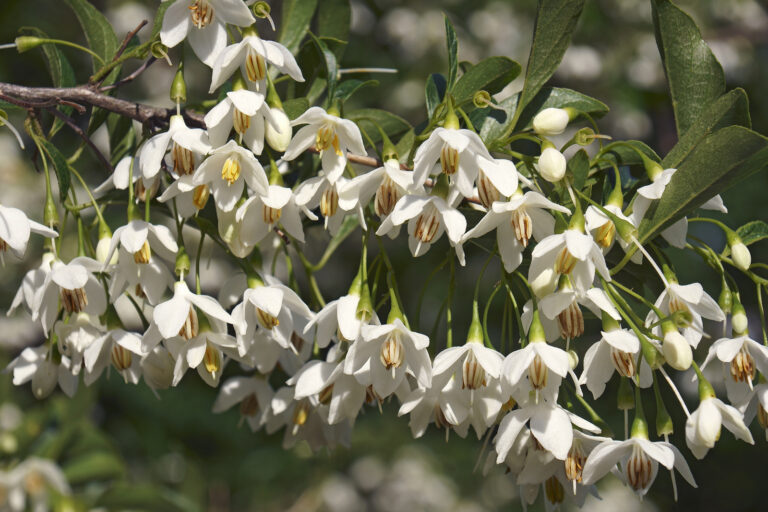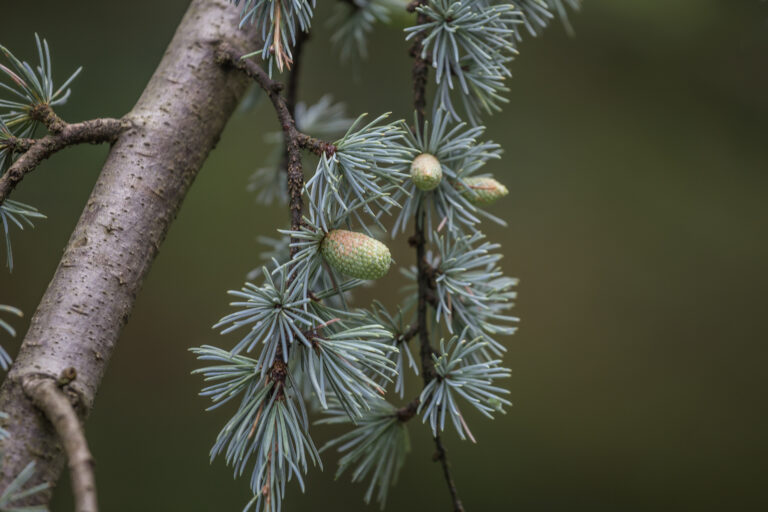How to Grow Locust – Robinia
Robinia is fast-growing and well adapted to dry, hot regions. It produces hanging clusters of white or pink sweetpea-like flowers. The leaves are delicate and feathery, made up of numerous small leaflets borne on slender branches.
Robinia tolerates drought and urban conditions but its wood is brittle and susceptible to breaking in high winds. As well, the tender branches can be thorny.
Shrub members of the Robinia genus are suite for shrub borders.

Get to know Robina
- Plant type: Deciduous shrubs or trees
- Growing zones and range: Zones 4 to 9
- Hardiness: Leaves drop with autumn frost
- Height and width: Trees can grow to 60 feet (19m) tall and just as wide.
- Foliage: Individual alternate leaves are 6-10 inches (15.2-25.4cm) long and are made up of 7 to 13 leaflets, each about an inch (2.5cm) long; stems are covered with a moss of red bristles, which gives the shrub one of its common names, Moss locust
- Seeds: Occasionally, short red-bristled seed pods follow the flowers in late summer
- Flowers: Pendant clusters of 1.3 inch (3.3cm) unscented pink flowers; the clusters, about 2.5 inches (6.4cm) long, contain 5 to 10 closely set blossoms and appear when the foliage is fully developed
- Bloom time: Mid-spring to early summer
- Uses: Landscape tree; wood is brittle and may not be best suited for street planting
- Common name: Locust
- Botanical name: Robinia
- Family name: Fabaceae
- Origin: North America

Where to plant Robinia
- Plant Robinia in full sun.
- Plant Robinia in well-drained, moist, fertile soil; however, they can fix their own nitrogen from their soil, so they adapt well to poor infertile sites.
- Robinia stems are very brittle and, for that reason, those that have been grafted should be planted in places that are sheltered from the wind.
- Robinia tolerates drought and urban conditions.
When to plant Robinia
- Set container-grown Robinia in the garden in spring or autumn.
- Sow Robinia seed in containers in a cold frame in autumn.
- Insert root cuttings or graft in winter.
Planting and spacing Robinia
- Space Robina 50 to 60 feet (15-18m) apart.
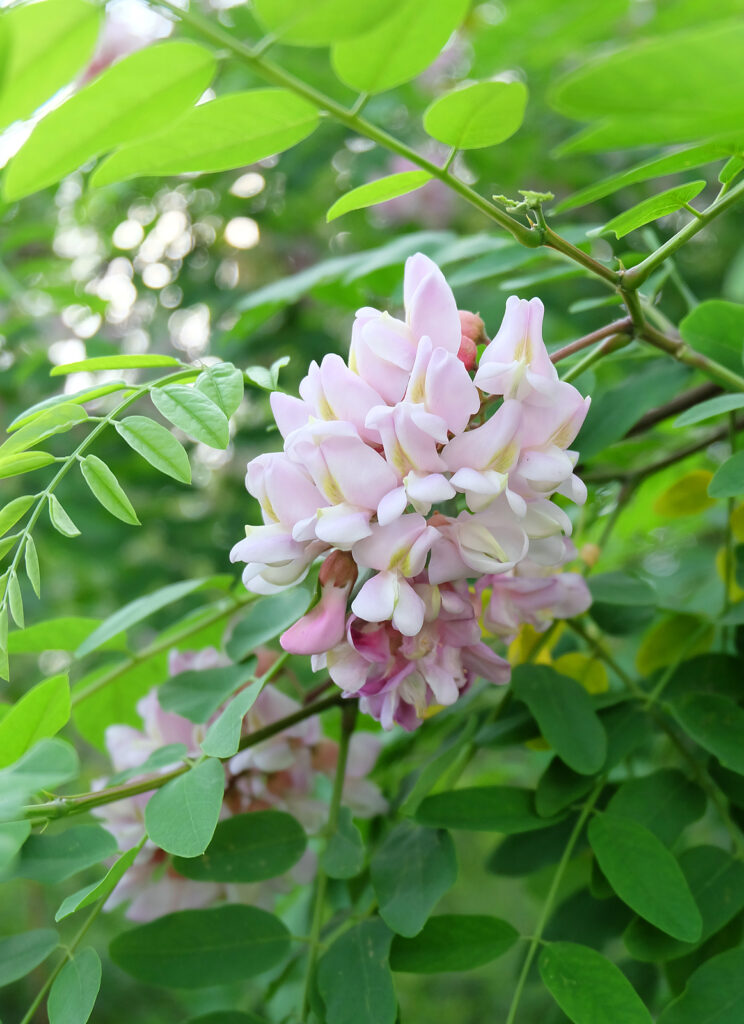
How to water and feed Robinia
- Keep the soil evenly moist; established trees are drought tolerant.
- Fertilize Robinia with an all-purpose, organic fertilizer in spring.
Robinia care
- Prune Robinia in fall or winter to develop a single leader; multiple trunks are weak.
- Fast-growing Robinia suckers can sprout at great distances from the trunk, especially in poor-soil sites, and should be cut out promptly.
- All other Robinia pruning should be done after the flowers have faded, since the flowers form on previous season’s growth, not on new growth.
- Prune Robinia in fall or winter to develop a single leader; multiple trunks are weak.
Robinia problems
- Robinia wood is brittle; the roots are aggressive and plants often spread by suckers.
- Suckers can sprout at a great distance from the trunk; they should be cut right away.
- Robinia has shallow roots can be toppled by high winds, especially if the ground is soggy.
- Robinia bark, leaves, and seeds are poisonous if ingested.
- Robinia can suffer from leaf spot, wood rot, canker, powdery mildew, Verticillium wild, and heart rot.
- Robinia are susceptible to attacks by borers, caterpillars, weevils, scale insects, white flies and miners.
Robinia propagation
- New Robinia plants can be started from softwood cuttings of young growth in late spring or early summer, from root cuttings or by division of the suckers.
- Sow seed of species in spring.
- Cultivars need to be grafted.
- Suckers can be transplanted.
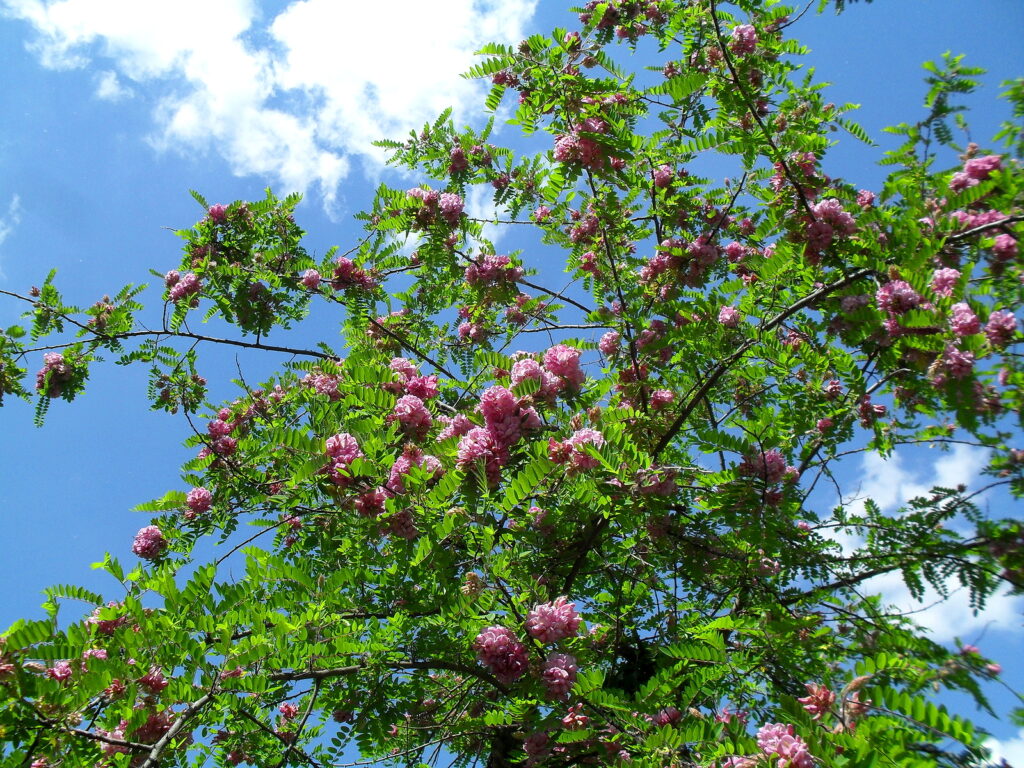
Robinia varieties to grow
- Robinia ambigua, the name given to hybrids between R. pseudoacacia and R. viscosa, a seldom-grown pink-flowering locust. The following are best-known varieties.
- ‘Decaisneana’, to 40-50 feet (12.2-15.2m) tall, 20 feet (6.1m) wide. Flowers like those of P. pseudoacacia but pale pink.
- ‘ Idahoensis’, Idaho locust, tree of moderately fast growth to shapely 40 feet (12.2m). Bright magenta rose flowers in 8 inch (20.3cm) clusters; one of showiest of locusts in bloom.
- ‘Purple Robe’, resembles ‘Idahoensis’ but has darker, purple-pink flowers, reddish bronze new growth; blooms 2 weeks earlier and over a longer period.
- R. neomexicana, New Mexico locust, upright, thicket-forming, spiny shrub or small tree with pinnate, hairy, blue-green leaves, to 8 inches (20cm) long, composed of 13-25 lance-shaped, narrowly ovate or oblong leaflets. In early summer, bears pink flowers, 1 inch (2.5cm) long, in pendent racemes, to 4 inches (10cm) long, followed by sparsely glandular brown seed pods, to 4 inches (10 cm) long. To 20 feet (6m) and 15 feet (5m) wide. New Mexico, Arizona.
- R. pseudoacacia, Black locust, tree. Native to eastern and mid-western U.S. fast growth to 75 feet (22.9m), with rather open and sparse-branching habit. Deeply furrowed brown bark. Thorny branchlets. Leaves divided into 7 to 19 leaflets 1-2 inches (2.5-51cm) long. Flowers white, fragrant, .5-.8 inches (1.3-2cm) long, in dense, hanging clusters 4-8 inches (10.2-20.3cm) long. Beanlike, 4 inches (10.2cm) pods turn brown and hang on tree all winter.
- Little valued in its native territory except as a source of honey and fence posts, it has been widely planted (and has subsequently escaped) in much of the western U.S. and in Europe. It manufactures its own fertilizer through nitrogen-fixing root nodule bacteria and can colonize the poorest soil. Given some pruning and training in its early years, it can be a truly handsome flowering tree, but locust borer limits its usefulness in many regions. Locust leaf miner is also a damaging pest in some areas. Zones 4 to 9.
- R. hispida, Rose acacia, Moss locust, upright, suckering shrub with bristly shoots and pinnate, dark green leaves, to 12 inches (30cm) long, composed of 9-13 ovate to broadly elliptic leaflets. In late spring and early summer, bears light rose-pink flowers, 1.25 inch (3cm) long, in pendent racemes, to 5 inches (13cm) long, followed by bristly brown seed pods, 1.5-2.5 inches (4-6cm) long. To 8 feet (2.5m tall and 10 feet (3m) wide. S.E. United States.
- R. hispida macrophylla, Smooth rose acacia, has fewer bristles, the leaves are larger and the flowers are a deeper pink.


